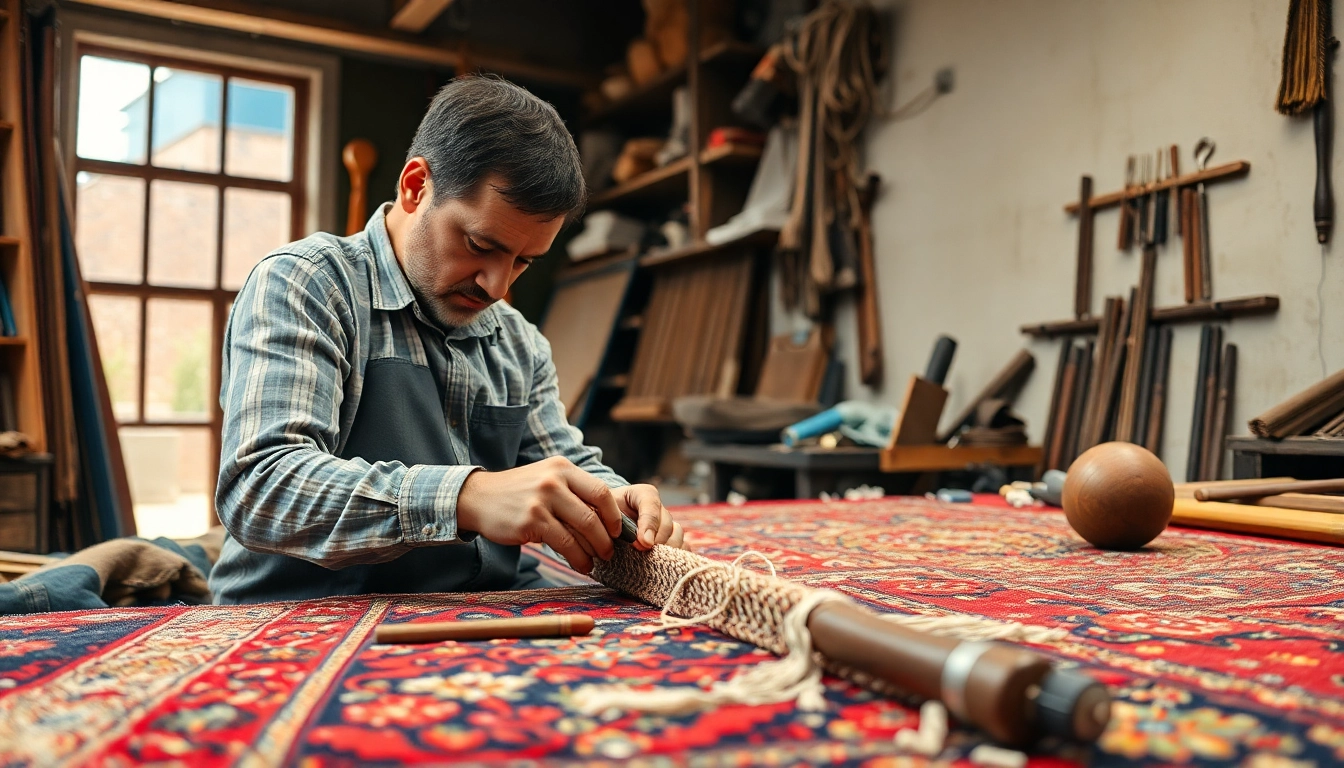Understanding the Importance of Restauro Tappeti Milano
Restoring antique and modern carpets is a delicate art that combines craftsmanship, historical awareness, and technical precision. For residents and collectors in Milan, a city renowned for its rich cultural heritage and appreciation for fine arts, Restauro Tappeti milano services are vital in preserving the beauty, integrity, and value of precious textiles. Whether dealing with damages from aging, human activity, or environmental factors, professional restoration ensures that carpets retain their aesthetic appeal and cultural significance for generations to come.
Why Professional Restoration Matters
Restoring a tapestry or carpet isn’t just about cleaning or quick fixes; it involves understanding the material composition, weaving techniques, and historical value. Professionals in Milano employ specialized treatments that preserve the original craftsmanship while repairing damages such as tears, holes, frayed edges, or staining. Without expert intervention, DIY repairs can cause further deterioration, diminish the carpet’s value, and sometimes irreversibly harm its historical integrity.
Common Damages Repaired During Restauro
Restoration agents typically resolve various types of damage, including:
- Physical Tears and Rips: Reinforced to maintain structural stability.
- Frayed or Worn Fringes: Repaired or replaced to restore aesthetic uniformity.
- Stains and Discoloration: Treated with appropriate cleaning agents that do not compromise fabric integrity.
- Burns and Holes: Filled with matching fibers and weaving techniques to blend seamlessly.
- Warp and Weft Damage: Rewoven with historically accurate materials and methods.
Historical and Artistic Value Preservation
Beyond mere aesthetics, restoring antique carpets helps preserve their cultural and artistic narratives. Each rug embodies the craftsmanship, story, and regional identity of its origin. Expert restorers use techniques to ensure that the finished product respects the tapestry’s authentic appearance, allowing future generations to appreciate its historical context and artistic beauty without compromise.
Restauro Tappeti Milano: Techniques and Best Practices
Traditional vs Modern Restoration Methods
Restoration techniques in Milan range from traditional artisanal methods to state-of-the-art technological procedures. Traditional restoration involves meticulous hand-woven repairs, using natural fibers like wool, silk, or cotton, and dyes matching the original palette. This approach honors the craftsmanship of historic pieces.
Modern methods incorporate advanced tools such as high-resolution digital imaging for damage assessment, laser cleaning for delicate dyes, and synthetic fibers for high durability repairs. Combining these approaches often yields the most effective results, ensuring long-lasting restoration without compromising authenticity.
Step-by-Step Restoration Process
- Experts analyze fiber damage, dyes, and weave quality, often employing microscopic and spectral imaging tools.
- Cleaning: Gentle cleaning to remove dirt, dust, and stains, utilizing eco-friendly, pH-balanced solutions.
- Damage Repair: Reweaving and patching tears or holes with matching fibers and weaving techniques.
- Color Repair and Retouching: Using age-appropriate dyes to restore faded colors, ensuring they blend seamlessly.
- Final Finishing: Stretching, mounting, or framing to preserve the restored rug’s shape and display quality.
Materials and Tools Used in Tappeti Restoration
Restorers employ a variety of materials—fine natural fibers, dyes, adhesives, and backing fabrics—chosen to match original specifications. Tools include hand-weaving implements, microscopic needles, laser cleaning devices, and UV lighting for color verification, all aimed at achieving precise, durable repairs while respecting the piece’s historic integrity.
Choosing the Right Restauro Service in Milano
Key Factors to Consider When Selecting an Expert
Quality restoration hinges on experience, specialization, and reputation. When choosing a service, consider:
- Expertise in antique and modern carpets, with demonstrable portfolio
- Use of authentic, tested materials and techniques
- Positive client testimonials and industry certifications
- Transparency in pricing and step-by-step process
Questions to Ask Before Starting Restoration
To ensure a smooth process, inquire about:
- The specific restoration techniques they will use
- The estimated time frame for completion
- Experience with similar types of textiles
- Guarantees or warranties offered post-restoration
How to Assess Service Quality and Pricing
Compare quotes from multiple providers, ensuring transparency and detail. Recognize that high-quality restoration isn’t necessarily the cheapest but offers durability, authenticity, and value preservation. Request references or review case studies for past projects to gauge results.
Cost and Timing for Restauro Tappeti Milano
Typical Pricing Range and Value for Money
Restoration costs can vary widely based on the extent of damage, size, age, and complexity. Generally, prices range from 50 to 1000 euros per piece. Basic cleaning and minor repairs are on the lower end, while extensive reconstructive work on antique masterpieces commands higher fees. Always prefer comprehensive estimates to avoid surprises and assess the overall value for money.
Estimated Timeline for Complete Restoration
Restoration durations depend on damage severity and service load. Minor repairs may take 1–2 weeks, while complex projects can extend up to 4–6 weeks. It’s advisable to plan ahead, particularly for valuable or delicate pieces, to ensure adequate time for meticulous work.
Factors Influencing Cost and Duration
Factors include:
- Size of the carpet
- Type and age of fibers used
- Extent of damage and repair complexity
- Availability of matching materials and dyes
- Restorer’s expertise and backlog
Maintaining and Extending the Life of Restored Tappeti
Proper Cleaning and Care Tips
Post-restoration care is vital to prolong the life of your carpets. Regular vacuuming using gentle settings, avoiding direct sunlight, and periodic professional cleaning help preserve colors and fibers. Use mild detergents or avoid harsh chemicals that can degrade natural fibers.
Preventive Measures Against Damage
Protect carpets from moisture, pests, and physical wear. Rotate rugs periodically to prevent uneven fading or crushing; use rugs pads to reduce friction; and control indoor climate to inhibit mold and insects.
When to Schedule Follow-up Restoration
Periodic evaluations by professionals can identify new damages early. Generally, follow-up restoration should be scheduled every 5–10 years or sooner if visible issues arise, ensuring continuous preservation of the textile’s beauty and structure.



